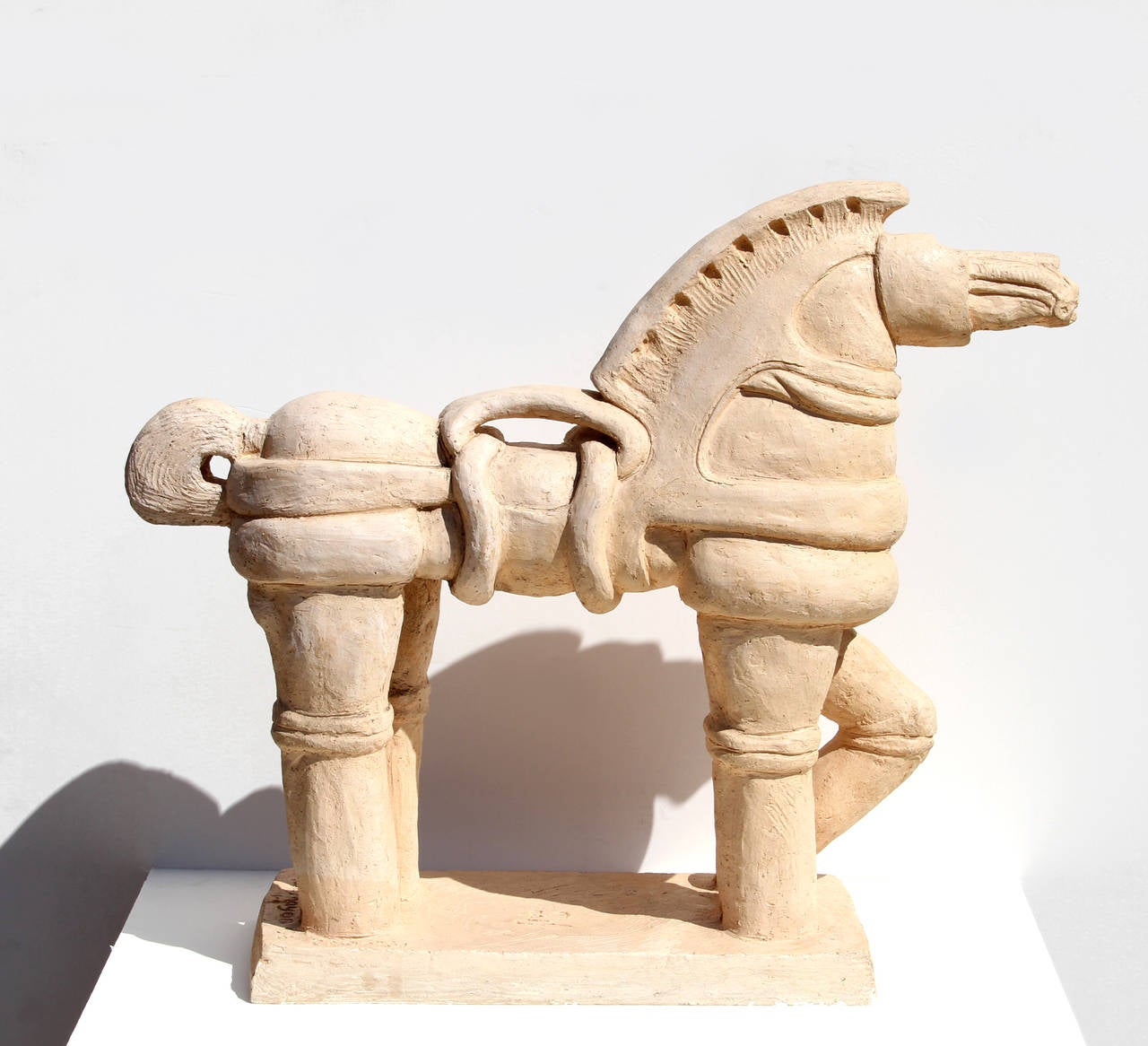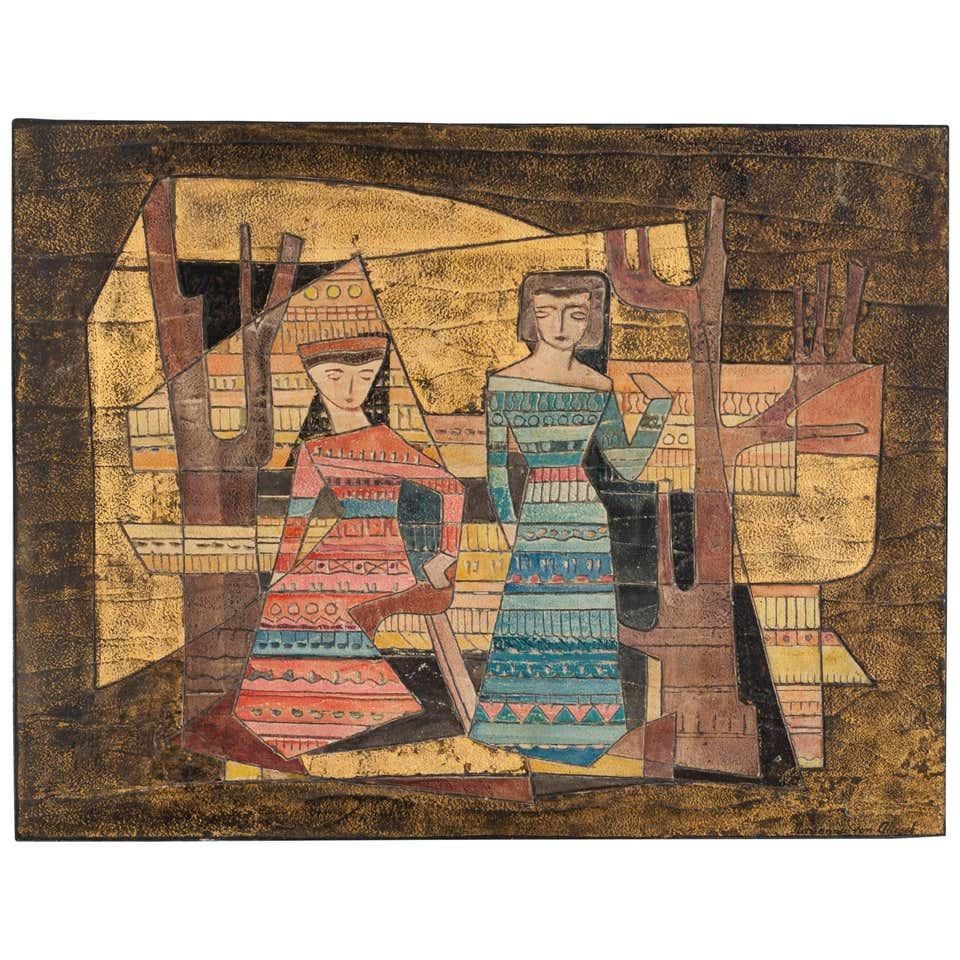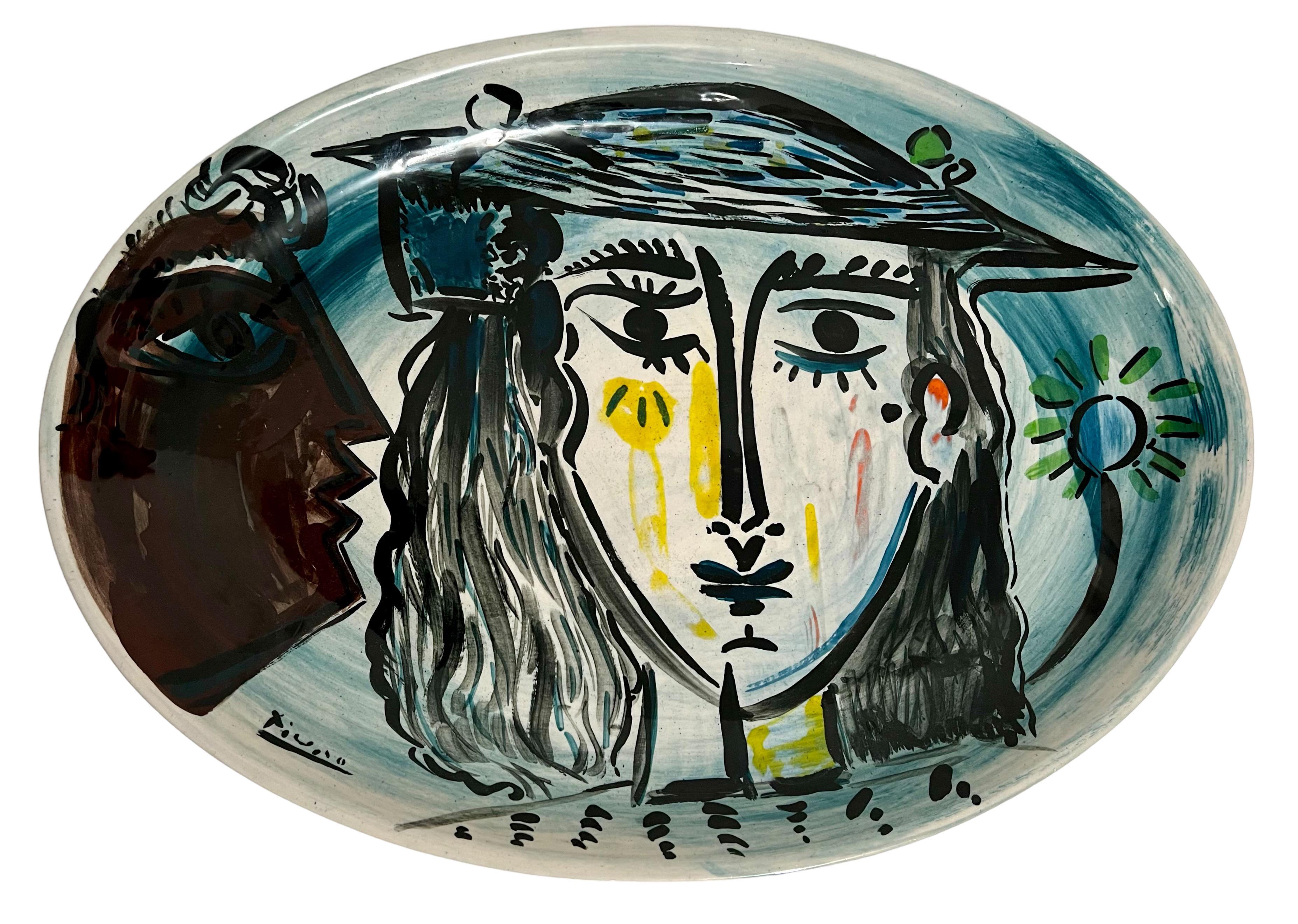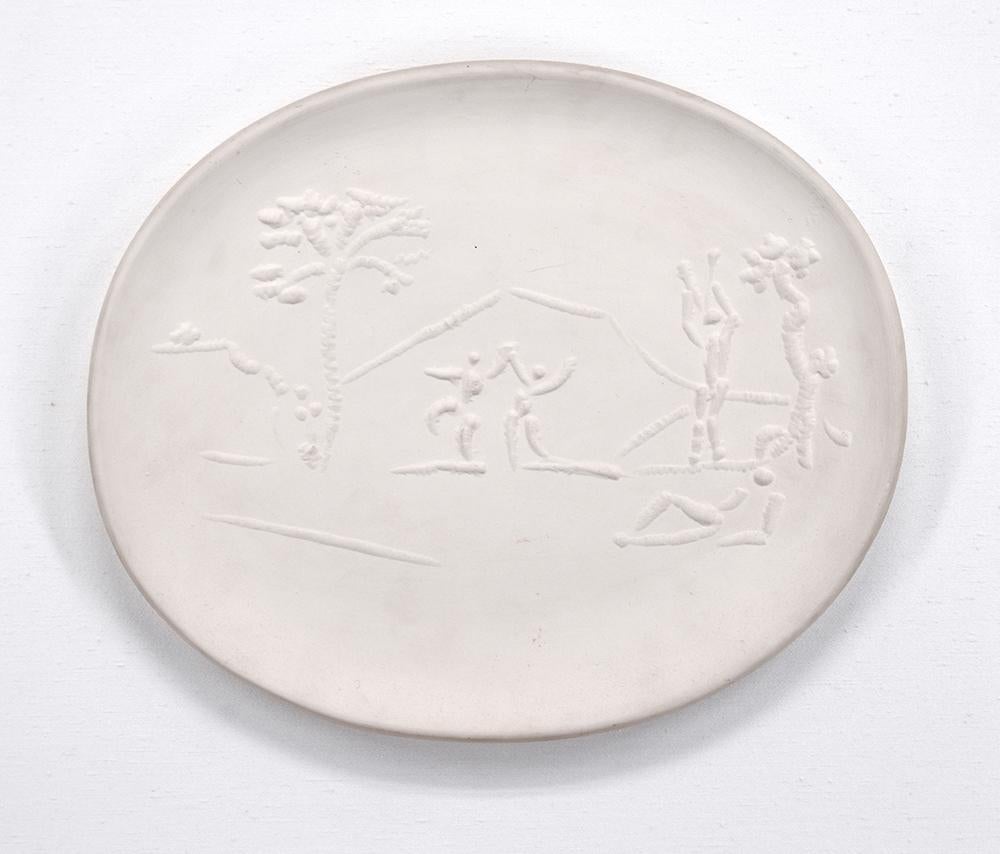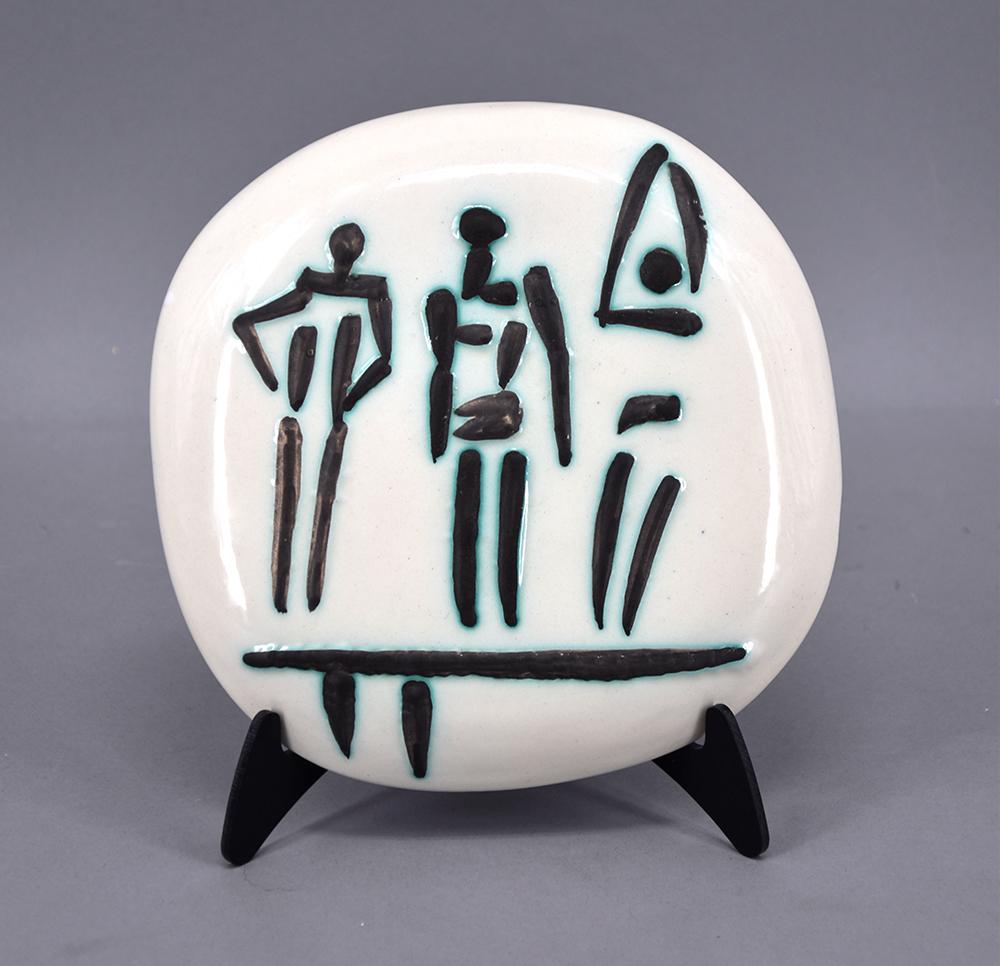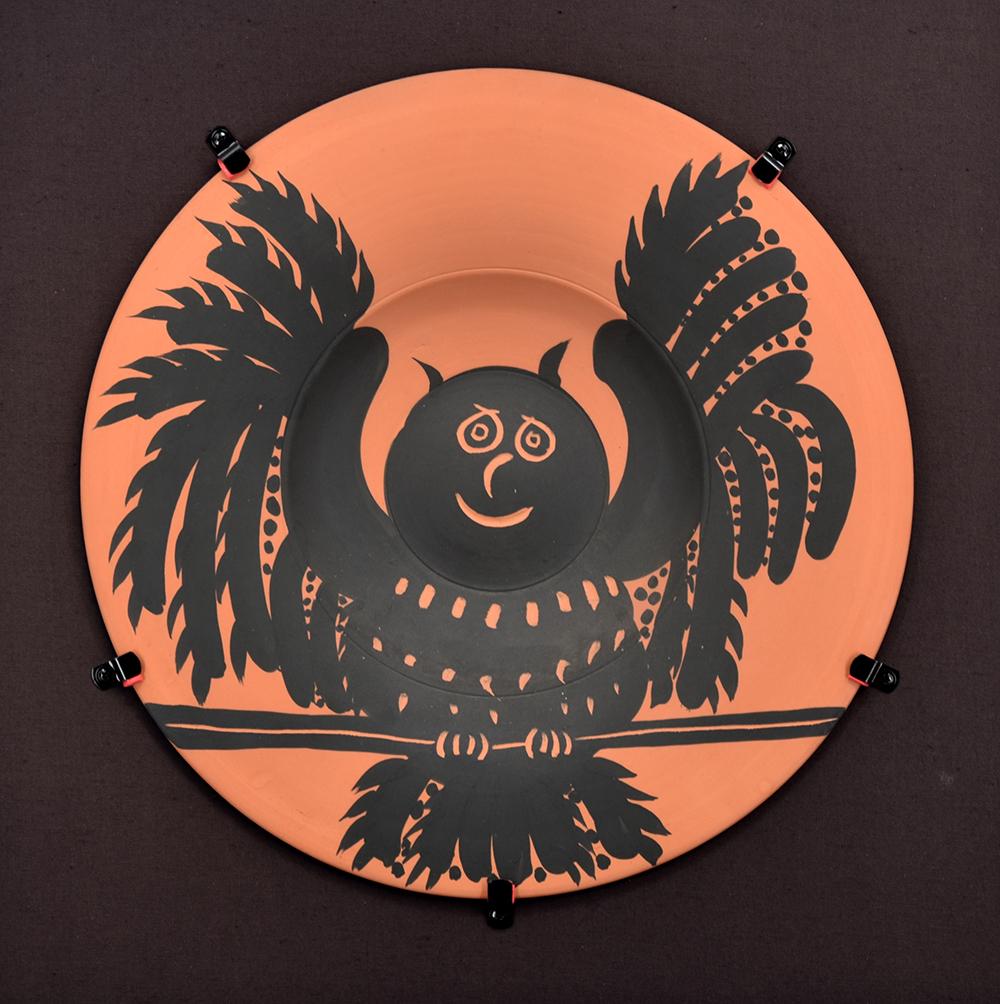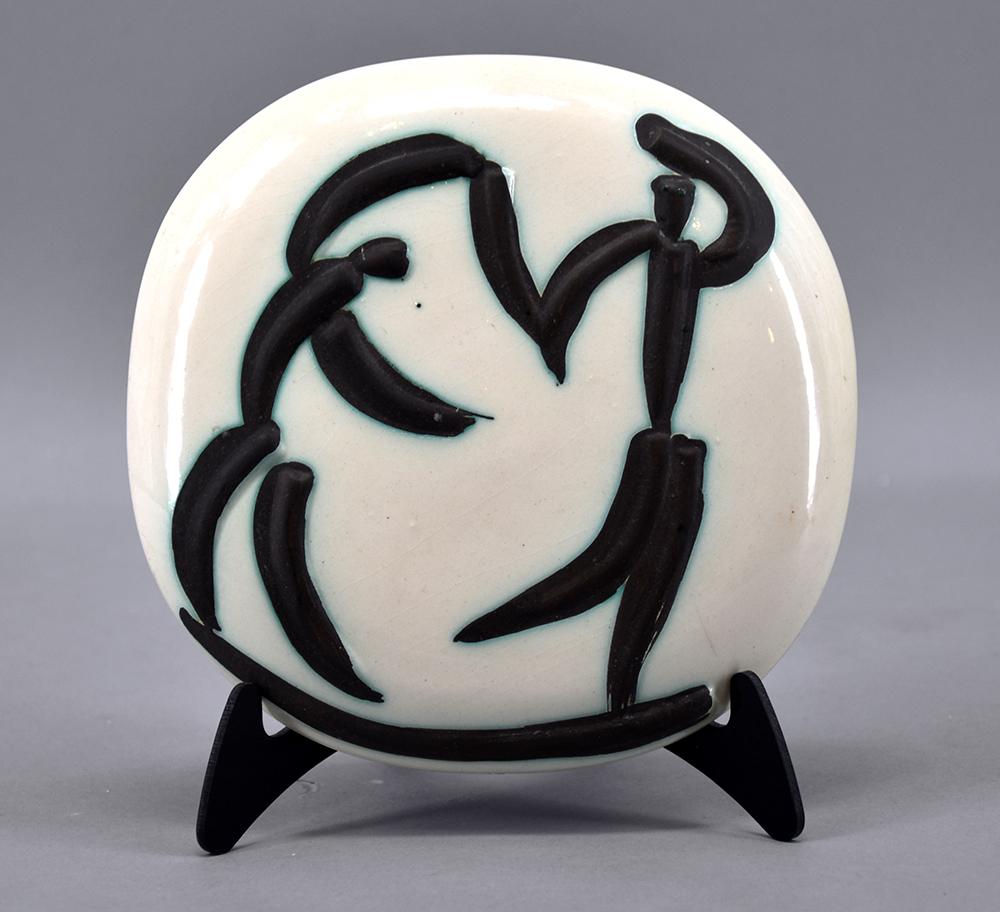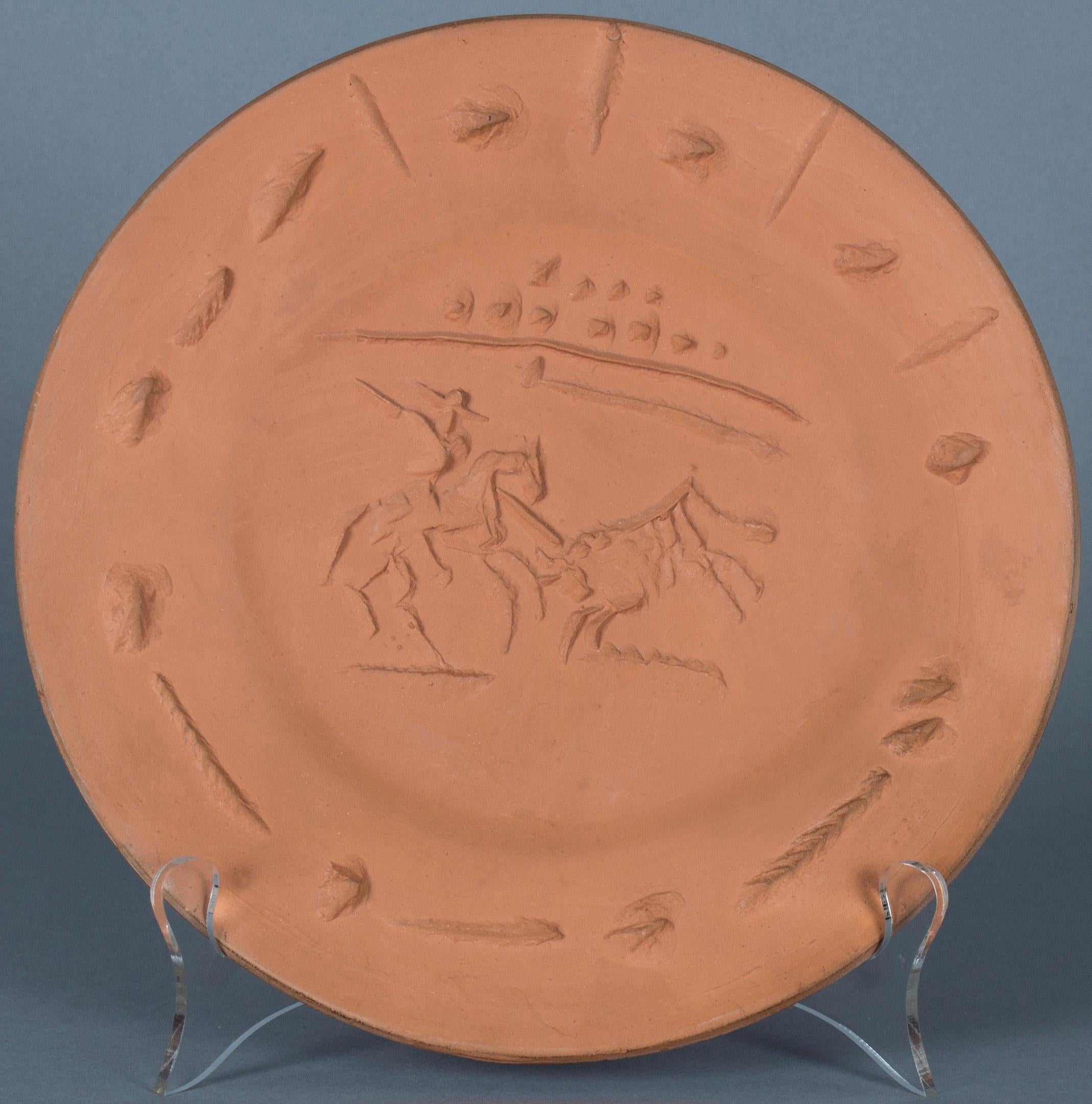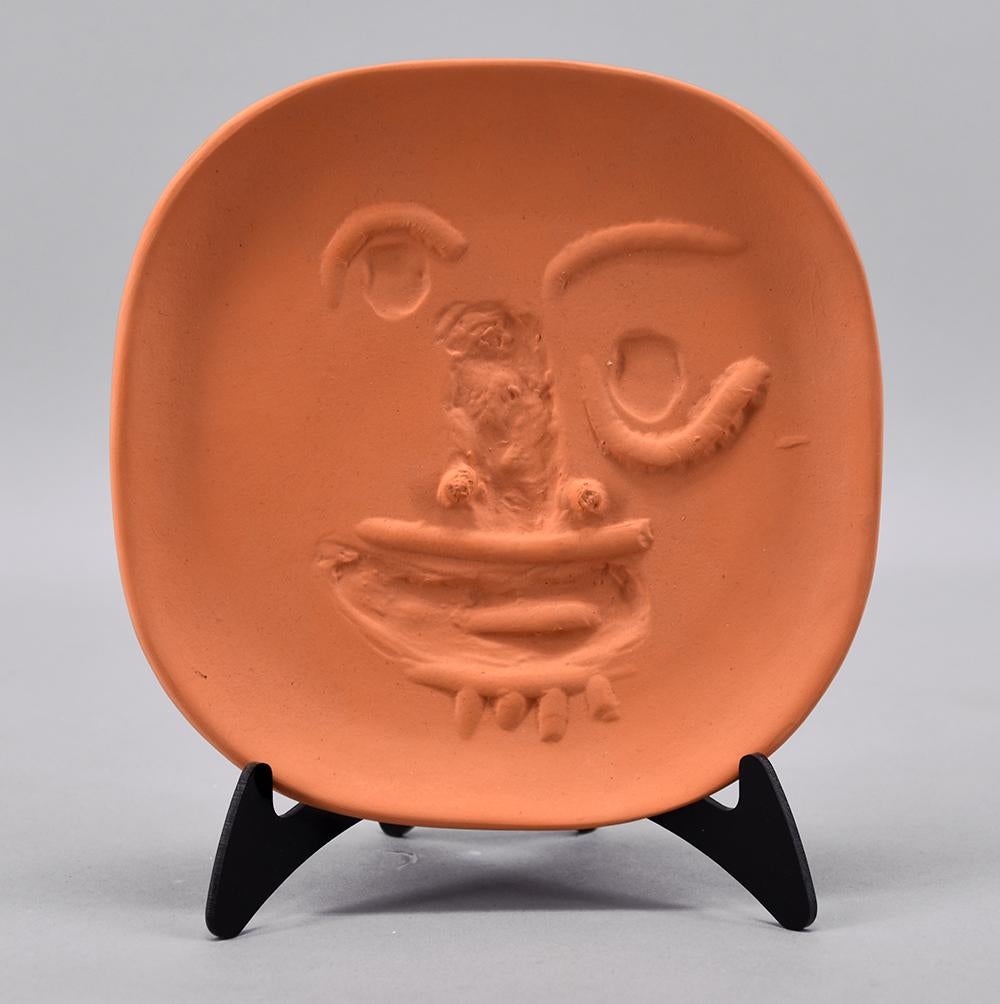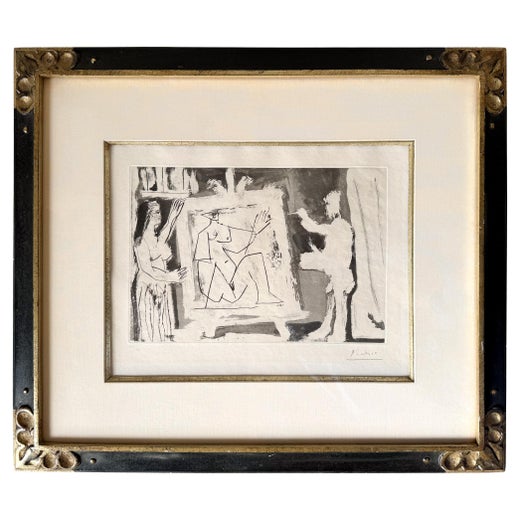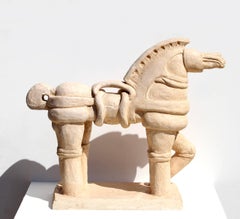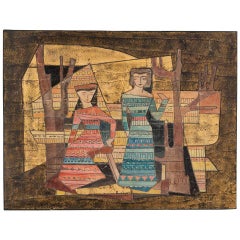
Colombe mate
View Similar Items
Pablo PicassoColombe mate1948
1948
About the Item
- Creator:Pablo Picasso (1881-1973, Spanish)
- Creation Year:1948
- Dimensions:Height: 12.21 in (31 cm)Width: 14.77 in (37.5 cm)
- Medium:
- Movement & Style:
- Period:
- Condition:
- Gallery Location:Paris, FR
- Reference Number:Seller: PABLO PICASSO - COLOMBE MATE1stDibs: LU88732853093
Pablo Picasso
One of the most prolific and revolutionary artists the world has ever seen, Pablo Picasso had a tremendous impact on the development of 20th-century modern art. Although he is best known for his association with the Cubist movement, which he founded with Georges Braque, Picasso’s influence extends to Surrealism, neoclassicism and Expressionism.
“Every act of creation is, first of all, an act of destruction,” the Spanish artist proclaimed. In Picasso's Cubist paintings, he emphasizes the two-dimensionality of the canvas, breaking with conventions regarding perspective, foreshortening and proportion. Picasso was inspired by Iberian and African tribal art. One of his most famous pre-Cubist works is Les Demoiselles d’Avignon (1907), a painting considered immoral and shocking at the time for its depiction of nude women whose faces resemble Iberian tribal masks.
Picasso made many portraits in this style, most often of the women in his life, their expressively colored faces composed of geometric shards of surface planes. In Woman in a Hat (Olga), 1935, he painted his first wife as an assemblage of abstract forms, leaving the viewer to decipher the subject through the contrasting colors and shapes. Picasso was a tireless artist, creating more than 20,000 paintings, drawings, prints, ceramics and sculptures. Tracing his life’s work reveals the progression of modern art, on which he had an unparalleled influence.
Browse an expansive collection of Pablo Picasso's art on 1stDibs.
- Horse - Taal Mayon, Sculpture by Ben GonzalesBy Ben A. GonzalesLocated in Long Island City, NYTitle: Horse - Taal Mayon Year: 1981 Medium: Terra Cotta Sculpture, signed and dated Size: 20.5 in. x 23 in. x 6 in. (52.07 cm x 58.42 cm x 15.24 cm)Category
1980s Modern Figurative Sculptures
MaterialsTerracotta
- Marianna Von Allesch Ceramic Wall Hanging Art Mid-Century ModernLocated in Washington, DCRare and wonderful mid-century modern ceramic wall hanging by Marianna von Allesch. Incised design on ceramic panel. Signed lower right corner. Me...Category
1950s Modern More Art
MaterialsCeramic
$1,365 Sale Price30% Off - Ceramic Plate by Master Art Forger David Stein after Pablo Picasso VallaurisLocated in Surfside, FLApres Pablo Picasso (bears a pseudo signature recto) Hand signed David Stein, dated 1979 verso. Figural painted porcelain or ceramic serving dish, oval form. Dimensions: 18" X 14 David Stein (born Henri Haddad, 1935, Alexandria, Egypt – died 1999, Bordeaux, France) was an artist (notorious art forger) who, until 1966, had been frequently sentenced for theft by the French courts before becoming an art forger and art dealer with 15 aliases. Stein often copied paintings in the style of the masters. For example, he studied Marc Chagall, Matisse, Braque, Paul Klee, Joan Miró, Pablo Picasso, Jean Cocteau and Rouault, in order to copy their color scheme and inspirations. In 1967 Marc Chagall notified authorities of forgeries of his work hanging in a New York gallery, and Stein was arrested. Art dealers refused to cooperate with the prosecution because it would have incriminated them and made their expertise in the art field questionable. Some art collectors refused to give up their paintings as evidence. Stein was convicted of six counts of art forgery and grand larceny. During his prison term, Joseph Stone, the judge who arrested him, brought him to his office to paint. He remained a good friend of the Stein family long after Stein completed his jail sentence. In 1989 he discovered that Stein never stopped making forgeries. After Stein had served his prison term in the United States, he was deported to France where he served another term. Prison authorities allowed him to make further paintings, although now using his own name. In 1969 a London gallery sold some of these paintings. After Stein was released, he returned to painting, this time selling his paintings under his own name to put a mask on his real activities. The book Three Picasso's Before Breakfast (Mémoirs of an Art Forger's Wife) by Anne Marie Stein as told to Georges Carpozi Jr (Hawthorn Book Inc) was written by David's life partner Anne-Marie about their experiences in the art world. In the mid 1980s director Gil Cates gave his agent Arthur Axelman at William Morris a copy of the book which had been written without Stein's involvement. Axelman set out to find Stein and after several years he located him in Manhattan. Stein became an Axelman client and friend. While deals at HBO and ABC did not lead to production of a film, Axelman introduced Stein to Keith Carradine and Alan Rudolph, director of the movie "The Moderns" with ultimately starred John Lone, Géraldine Chaplin, Keith Carradine and Linda Fiorentino. The film was set in the Paris of the '20s although filmed in Montreal. Stein appeared in the film as an art critic and provided all of the art. A minor concern was a scene where a painting in the style of Matisse and Modigliani was to be burned on camera and a Modigliani destroyed by knife. No one cared to destroy any of Stein's copies, "Just good for the camera" say Stein. but a William Morris assistant for agent Axelman suggested making large format copies of the works to be destroyed. Stein refused and during the scene actor John Lone destroyed the Paintings. Stein was living in France after his troubles with the US immigration who had told him to leave US territory in 1988. He met the French photo...Category
1970s Modern Figurative Sculptures
MaterialsEnamel
- Hibou aux ailes déployées (Owl with spread wings), 1957By Pablo PicassoLocated in Palo Alto, CACreated in 1975, this madoura turned round dish of red earthenware clay, engobe decoration in black and knife engraving is from the edition of 200 and stamped with the 'MADOURA PLEIN FEU' and 'EDITION PICASSO' pottery stamps on the back. Pablo Picasso ceramic Hibou aux ailes déployées (Owl with spread wings), 1957 A.R. 397 features a smiling owl with wings opening above its head. The owl sits on a thin branch that spans the lower length of the plate, extending the scene beyond the bounds of the ceramic. Beautiful, bushy feathers fan out. Picasso uses...Category
1950s Modern Figurative Sculptures
MaterialsCeramic
$30,000 Sale Price25% Off - Les danseurs (Dancers), A.R. 387By Pablo PicassoLocated in Palo Alto, CACreated in 1956, this Madoura small convex wall plaque of white earthenware clay with engraving accentuated with oxidized paraffin and glaze bath (ivory, brown) is stamped with the ‘EMPREINTE ORIGINALE DE PICASSO’ and ‘MADOURA PLEIN FEU’ pottery stamps on the reverse; from the edition of 500. In fluid motions floating across the ceramic, the characters in Pablo Picasso ceramic Les danseurs...Category
1950s Modern Figurative Sculptures
MaterialsClay, Ceramic, Earthenware, Glaze
- Paseo, from Service Scènes de Corrida, A.R. 416By Pablo PicassoLocated in Palo Alto, CACreated in 1959, Pablo Picasso (Málaga, 1881 – Mougins, 1973) Paseo A.R. 416 is numbered from the edition of 50 on the reverse and stamped with the 'MADOURA PLEIN FEU' and ‘EMPREINTE ORIGINALE DE PICASSO' pottery stamps on the reverse. Pablo Picasso was an avid fan of bullfighting his entire life, attending his first corridas when he was a child in Spain and gaining a renewed interest in the events when he settled in the South of France after World War II. Undoubtedly the theatrical drama and flashy machismo of the matadors appealed greatly to Picasso's sensibilities and resonated with his Spanish roots. In 1959, Picasso produced an 8-piece plate series, each featuring a different bullfighting scene suggested through lively stipple lines. Paseo A.R. 416 depicts a line of bullfighters highlighted by a streak of yellow. The strokes of blue above and below the figures contrast with the warm of the yellow, creating visual tension that anticipates the drama of the fight. Catalogue Raisonné & COA: Pablo Picasso Paseo...Category
1950s Modern Figurative Sculptures
MaterialsEarthenware, Clay, Glaze
$24,000 Sale Price36% Off
Recently Viewed
View AllRead More
Science Uncovers Hidden Truths behind Young Pablo Picasso’s Blue Period
From 1901 to 1904, Picasso limited his palette to bluish hues in producing some of his most famous early works. A new show looks at the recycled materials, hidden underpaintings, surprising influences and bohemian lifestyle that led to their creation.
Who Are the Most Popular Artists on 1stdibs?
Learn the stories of some of the world's most recognizable artworks and their makers.
